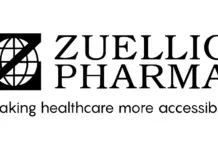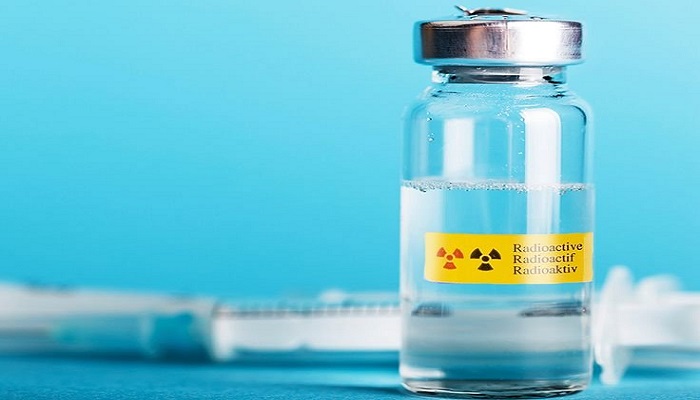The radiopharmaceutical industry is growing very quickly. In the past few years, there have been more mergers and acquisitions (M&A) and partnerships. Investors can find good business chances by learning more about this field.
Recent mergers, purchases, and joint deals in the medical field show that investors are becoming more interested in the radiopharmaceutical area.
Recently, Radiopharm Theranostics got promises from big investors to raise $70 million. Lantheus Holdings, a leader in the radiopharmaceuticals business, has invested $7.5 million in the company. Lantheus also agreed to spend an extra $7.5 million within six months of giving out the shares.
Lantheus has a deal with Radiopharm to license two experimental assets for $3 million, which is separate from the funding.
Bristol-Myers Squibb agreed in principle to buy RayzeBio for $4.1 billion based on the results of clinical studies of two possible cancer treatments that use actinium-225.
The $1.4 billion deal for Point Biopharma was completed by Eli Lilly. The company already has lutetium-177 treatments in Phase 3 studies.
Late last year, Nucleus RadioPharma announced that its $56 million Series A funding round had been oversold. The round was led by GE HealthCare Technologies and Eclipse. The Mayo Clinic, Mercy Health, Granger Management, the Fox Chase Cancer Center, and Echo Global were some of the other groups that took part.
Plans call for building new factories, such as one near the Mayo Clinic in Rochester, Minnesota, and making technology for developing, making, and selling radiopharmaceuticals.
Fusion Pharmaceuticals was a radiopharmaceutical partner that AstraZeneca bought for $2 billion. By doing this, it not only added a group of specific radiation treatments to its list of offerings, but it also made sure it had the supply chain and manufacturing infrastructure to back them up.
Novartis’ recent purchase of Mariana Oncology is more proof that investors are becoming more interested in radiopharmaceutical treatments.
Investors will be able to find the best investment chances in this niche market that is growing quickly if they learn more about radiopharmaceuticals and how they can be used in medicine.
What do radiopharmaceuticals mean?
A radiopharmaceutical is a full dosage form made up of radioactive material and at least one other ingredient that is meant to identify, track the success of treatment, or provide therapy.
Any non-radioactive chemical or radioactive source used to make that material is included in that description. In nuclear medicine, the words radiopharmaceuticals and radioactive drugs mean the same thing.
All hazardous materials in a country are controlled by its nuclear controllers. Another group that regulates radiopharmaceuticals is the US Food and Drug Administration (FDA). This is because they are prescription drugs.
Radiopharmaceuticals used in testing
In scintigraphy, which is also known as radioactive scans, radiopharmaceuticals are used to make pictures.
A very small amount of a radionuclide is first shot or eaten. For each area they are studying, specialists use a different isotope.
Second, a gamma camera picks up the radioisotope’s gamma rays, and a computer makes a picture of where the radionuclides are clumped together, which could mean that cancer cells are there.
This makes pictures of the body part being watched without hurting it. It is also known as radionuclide scanning.
The amount of radium is about the same as an X-ray, and it goes away in a few days.
New developments in Radiopharmaceuticals
Radiopharmaceuticals are useful for both diagnosis and medicine. Radiopharmaceuticals are being made and tested by researchers to fight different types of cancer, such as colon cancer, leukemia, lung cancer, and melanoma. Radiopharmaceutical treatment works best on tumors that have molecules on the outside of their cells that can be targeted and enough blood flow to deliver drugs.
Certain drugs help to find tumor markers and make it easier to find and stage dangerous spots. They make it easier to tailor therapy to specific needs and keep an eye on how well treatments are working.
Diagnosticians can see the smallest features of working cells by picking the right radioactive element. With this method, diseases are found faster than with other ways.
Then, these nuclear medicine drugs go from being used to diagnose to being used to treat, turning into theranostic agents. Theranostics use a radioactive drug to find out what’s wrong and another radioactive drug to treat the main tumor and any that have spread. To get the best care with the least amount of harm, each case must be tailored to the patient.
Radiopharmaceuticals combine new science discoveries with what we already know to improve imaging and theranostics. They have changed medicine by pointing doctors to specific treatments that are focused on effectiveness, safety, and patient well-being.
Radiopharm Theranostics is one of the leaders in radiopharmaceutical creation. Its approved platform technologies are being used to create diagnostic and treatment uses. There are a lot of different goods in the pre-clinical and clinical stages that the company is working on.
Applications in Oncology
Some radiopharmaceuticals treat cancer and other diseases when given in large doses. Small amounts are used to find medical problems. The radioactive agent hurts cancerous tumors by releasing energy when it comes in contact with the damaged tissue.
Technetium-99m is a radioisotope that is often used in nuclear medicine. It can help diagnose a number of diseases, including some cancers, when linked to different molecules.
Technetium-99m-MDP (methylene diphosphonate), for instance, is used to find cancerous metastases in the bones.
Iodine that is radioactive builds up in thyroid cells and can be used to kill thyroid cancer. Radium-233 (Xofigo), which is like calcium, is used to treat men whose prostate cancer has spread to their bones.
The experimental new drug 18-Pivalate from Radiopharm Theranostics was cleared by the FDA. It is a small chemical that targets fatty acids synthase, which is overexpressed in brain tumors but not in normal cells. Some good results have been seen in the company’s Phase 2 imaging study of 18-Pivalate in people who have brain tumors.
Opportunities that could happen
It was found by Data Bridge Market Research that the world market for radiopharmaceuticals will reach $12.18 billion by 2030.
Future Market Insights says that it will be worth $6.97 billion around the world in 2024. As more people learn about radioactive medicines, their value is projected to rise by 3.4% from 2024 to 2034, reaching more than $11.63 billion by 2034.
Cancer patients make up one of the biggest groups in the market for radiopharmaceuticals, if not the biggest group. To slow or stop the growth of tumors, they need medicines that contain radionuclides.



























